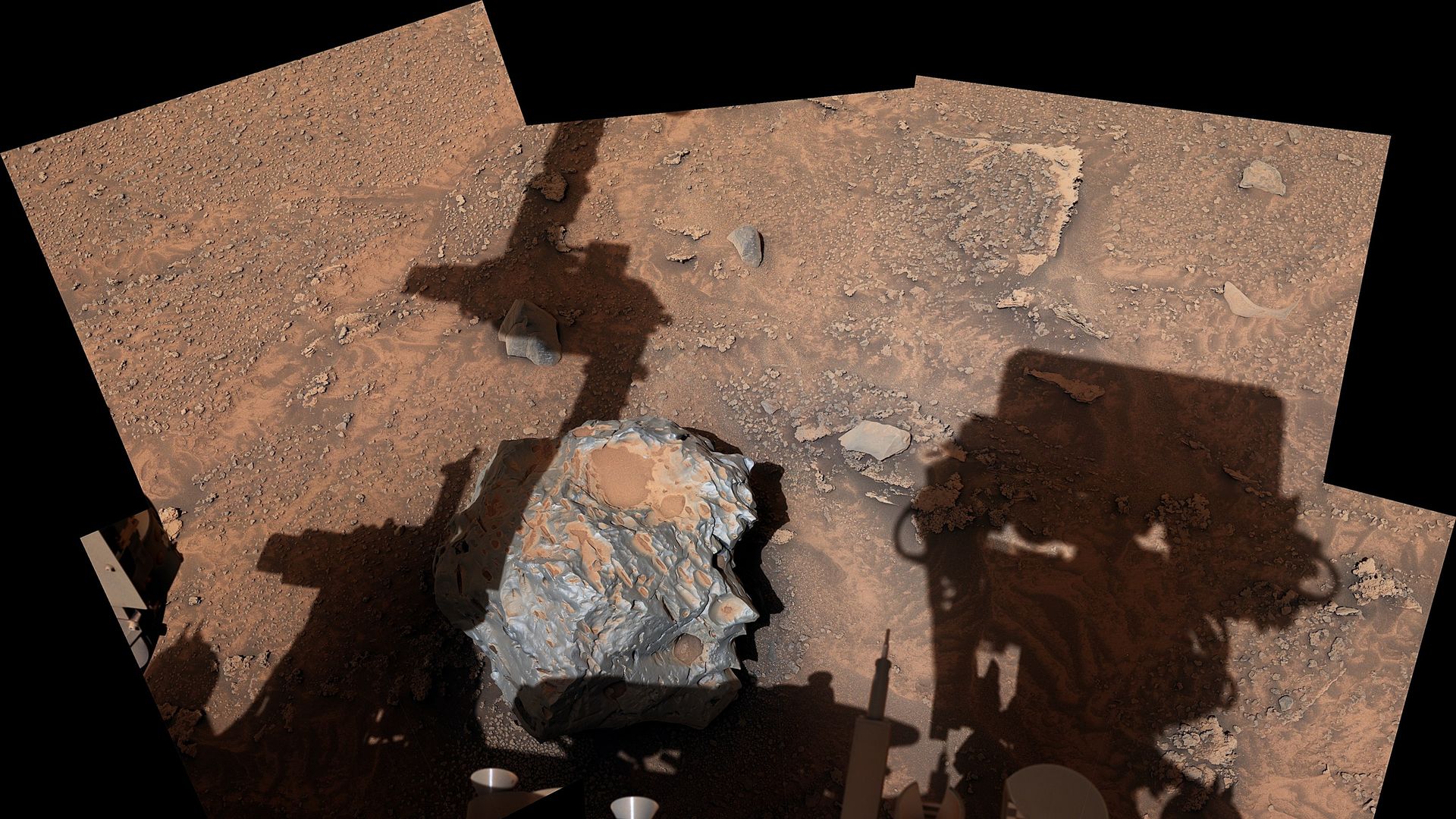| | | | | | | Presented By SiriusXM | | | | Axios Space | | By Miriam Kramer · Feb 07, 2023 | | Thanks for reading Axios Space. At 952 words, this newsletter is about a 4-minute read. - This week's newsletter is a little shorter than usual. I'm in D.C. at a retreat with our colleagues from around the world.
Please send your tips, questions and weather balloons to miriam.kramer@axios.com, or if you received this as an email, just hit reply. | | | | | | 1 big thing: Fighting climate change with satellite data |  | | | Illustration: Sarah Grillo/Axios | | | | Data from space is being used to try to fight climate change by optimizing shipping lanes, adjusting rail schedules and pinpointing greenhouse gas emissions, I write with my colleague Alison Snyder. Why it matters: Satellite data has been used to monitor how human activities are changing Earth's climate. Now it's being used to attempt to alter those activities and take action against that change. - "Pixels are great but nobody really wants pixels except as a step to answering their questions about how the world is changing and how that should assess and inform their decisionmaking," Steven Brumby, CEO and co-founder of Impact Observatory, which uses AI to create maps from satellite data, tells Axios in an email.
What's happening: Several satellite companies are beginning to use their capabilities to guide on-the-ground actions that contribute to greenhouse gas emissions cuts. - UK-based satellite company Inmarsat, which provides telecommunications to the shipping and agriculture industries, is working with Brazilian railway operator Rumo to optimize train trips — and reduce fuel use.
- Maritime shipping, which relies on heavy fuel oil, is another sector where satellites could help to reduce emissions by routing ships more efficiently and prevent communications-caused delays, says Inmarsat's CEO Rajeev Suri. The industry contributes 3% of global greenhouse gas emissions.
- Carbon capture, innovations in steel and cement production and other inventions are important for addressing climate change, Suri says. But using satellites is "potentially low-hanging fruit because these technologies are already available."
Other satellites are also tracking emissions of methane — a strong greenhouse gas — from landfills and oil and gas production. - "It's a needle in a haystack problem. There are literally millions of potential leak points all over the world," says Stéphane Germain, founder and CEO of GHGSat, which monitors methane emissions from its six satellites in orbit.
- A satellite dedicated to honing in on carbon dioxide emissions is due to launch later this year.
Between the lines: Emissions data from satellites has been used by advocates to "name and shame" emitters into action, but some companies are taking a different tack. - GHGSat, for example, chooses to partner with companies and governments to try to address their emissions usage without shaming them publicly.
- "Our single biggest success came through diplomatic channels working with three different ambassadors in one country to work with that government to decide to reduce some emissions," Germain says, declining to provide more details.
- "That never would have happened if we'd gone and splashed our name all over the front of a newspaper somewhere."
Yes, but: The business models for many of the companies working to track climate change from space are still being developed as they find niches to complement and incorporate publicly available data. What to watch: Satellites are just beginning to be talked about in settings like the UN climate conference COP as tools for monitoring and reducing emissions. - Companies also have to find ways to communicate what they can do with their technology to the public and potential customers, the Secure World Foundation's Krystal Azelton tells Axios.
- The key question, she says: "Who is it going to be used by and how are they going to educate?"
|     | | | | | | 2. JWST finds an asteroid |  | | | Artist's illustration of an asteroid. Image: N. Bartmann (ESA/Webb), ESO/M. Kornmesser and S. Brunier, N. Risinger (skysurvey.org) | | | | NASA's James Webb Space Telescope has discovered what scientists think could be its smallest object yet observed — an asteroid. Why it matters: The discovery is an example of the serendipitous power of having telescopes like the JWST keeping an eye on the sky. Driving the news: The asteroid is about the size of the Colosseum in Rome, according to NASA, and was discovered when scientists were calibrating one of the JWST's instruments. - The asteroid is located in the main belt of asteroids between Mars and Jupiter.
- "Our results show that even 'failed' Webb observations can be scientifically useful, if you have the right mindset and a little bit of luck," Thomas Müller, one of the authors of the new study published in Astronomy & Astrophysics, said in a press release.
- "Our detection lies in the main asteroid belt, but Webb's incredible sensitivity made it possible to see this roughly 100-meter object at a distance of more than 100 million kilometers."
What's next: Scientists will now need to perform follow-up observations to confirm the existence of the asteroid, and researchers think there are likely more lurking out there that the JWST might be able to spot. - "Repeats of these observations are in the process of being scheduled, and we are fully expecting new asteroid interlopers in those images," JWST scientist Bryan Holler said in the press release.
|     | | | | | | Bonus: About that Chinese balloon.... |  | | | Photo: Peter Zay/Anadolu Agency via Getty Images | | | | It didn't get to orbit, but Marina Koren at The Atlantic has a great take on why it should matter to space nerds: - "In a way, this is one more uncomfortable chapter in the story of adversarial nations operating in a shared stratosphere. It is also — hear me out — a little refreshing. After several years of breathless news coverage of mysterious things moving across the sky, inscrutable pilot footage, and shadowy government programs, here is a headline-grabbing flying object of concern that is, for once, identified. The U.S. and China may have different explanations for what the thing does, but we know what it is — and it's not aliens.
Go deeper: The Chinese balloon and the disappointing reality of UFOs |     | | | | | | A message from SiriusXM | | Get free access to music, sports, news and more | | |  | | | | Subscribe to SiriusXM Streaming and get access to 3 months of free: - Expertly curated ad-free music.
- Pandora artist stations.
- Live sports.
- Celebrity hosts, comedians and newscasters.
- Howard Stern and more.
More info: Listen on your phone, at home and more with the SXM App. See offer details. | | | | | | 3. Out of this world reading list |  | | | A metalic meteorite on Mars. Photo: NASA/JPL-CalTech via Twitter | | | | 🪨 Curiosity rover finds metallic meteorite on Mars (Mike Wall, Space.com) 🔭 Astronomers find 12 more moons orbiting Jupiter (Laura Baisas, Popular Science) 🚗 SpaceX put a Tesla sportscar into space five years ago. Where is it now? (Jackie Wattles, CNN) 🧑🏾🚀 NASA hits limits of space station utilization (Jeff Foust, SpaceNews) |     | | | | | | 4. Weekly dose of awe: Mountain peaks from orbit |  | | | Photo: NASA | | | | Mountains from space never get old. - This photo, taken from the International Space Station on Feb. 1, shows the snow-capped peaks of the Himalayas.
|     | | | | | | A message from SiriusXM | | Stream SiriusXM now and get 3 months for free | | |  | | | | Stream more than 425 channels on your devices for free on the SXM App, including expertly curated ad-free music, live sports, personalized stations and more. Next steps: Sign up now to get 3 months free. Cancel anytime. Learn more about the offer and start streaming. See offer details. | | | | 🛰 Big thanks to Alison Snyder for editing and writing with me, to Bill Kole for copy editing, and Sarah Grillo for the illustration. If this newsletter was forwarded to you, subscribe. |  | | Are you a fan of this email format? Your essential communications — to staff, clients and other stakeholders — can have the same style. Axios HQ, a powerful platform, will help you do it. | | | | | | Axios thanks our partners for supporting our newsletters.
Sponsorship has no influence on editorial content. Axios, 3100 Clarendon Blvd, Arlington VA 22201 | | | You received this email because you signed up for newsletters from Axios.
To stop receiving this newsletter, unsubscribe or manage your email preferences. | | | Was this email forwarded to you?
Sign up now to get Axios in your inbox. | | | | Follow Axios on social media:    | | | | | |
No comments